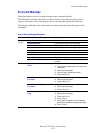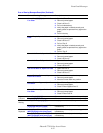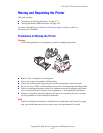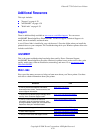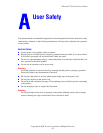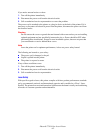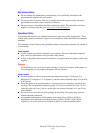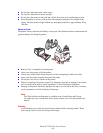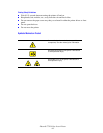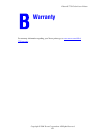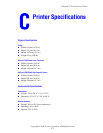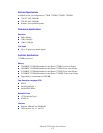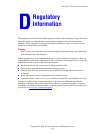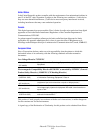
Phaser® 7750 Color Laser Printer
A-3
Maintenance Safety
■ Do not attempt any maintenance procedure that is not specifically described in the
documentation supplied with your printer.
■ Do not use aerosol cleaners. The use of supplies that are not approved may cause poor
performance and could create a hazardous condition.
■ Do not burn any consumables or routine maintenance items. For information on Xerox
supplies recycling programs, go to www.xerox.com/office/recycle
.
Operational Safety
Your printer and supplies were designed and tested to meet strict safety requirements. These
include safety agency examination, approval, and compliance with established environmental
standards.
Your attention to the following safety guidelines helps to ensure the continued, safe operation
of your printer.
Printer Supplies
■ Use the supplies specifically designed for your printer. The use of unsuitable materials
may cause poor performance and a possible safety hazard.
■ Follow all warnings and instructions marked on, or supplied with, the printer, options and
supplies.
Caution
If you attempt to use a non-Xerox toner cartridge, it may not fit properly in the printer. If
the cartridge does not fit properly, the printer will not function.
Printer Location
■ Place the printer in a dust-free area where the temperature range is 50 degrees F to
90 degrees F (10 degrees C to 32 degrees C) and the relative humidity range of 10 percent
to 85 percent.
■ Place the printer in an area where there is adequate space for ventilation, operation, and
servicing. The recommended minimal spacing is 10 cm (4 in.) behind, 36.8 cm (14.5 in.)
on the left side, and 5 cm (1.96 in.) on the right side without a finisher, or 61 cm (24 in.)
with a finisher.
■ Do not block or cover the slots and openings on the printer. The printer may overheat
without adequate ventilation.
■ For optimum performance, use the printer at elevations below 2,500 m (8,200 ft.).
Performance may diminish at elevations between 2,500 m (8,200 ft.) and 3,000 m
(9,840 ft.). Use at elevations above 3,000 m (9,840 ft.) exceeds operability limits.



